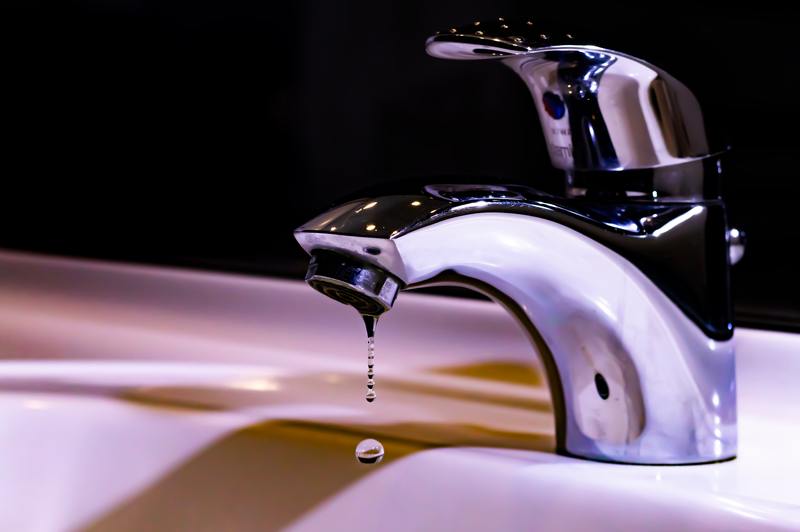Are you concerned about the growing mildew on your faucet? Want to know how to remove mildew around faucet?
If you’re dwelling on those above questions, this article would be perfect for you. For you’ll learn here what mildew is, how to remove it around the faucet, and how to clean one properly.

Keep on reading to comprehend and discover more.
Mildew At Faucets
First, let’s define what mildew is. According to FEMA, mildew, a mold in the early stage, is a fungus that thrives in any environment that’s moist and reproduces tiny spores that travel through the air.
It can grow on wood, ceiling, tiles, papers, walls, fabric, plants, foods, and many more. Compared to mold, mildew has a milder influence on health and the materials it grows on.
Anything that has a constantly moist surface can grow mildew, like the faucets. It could be dangerous if you used the faucet water for drinking water or cooking.
So, it is a must to observe your faucets regularly. It would be best if you cleaned taps once a few weeks.
You can also identify mildew by its smell, musty and earthy. Carefully observe if the water has mildew or the faucet is infested.
Yes, your water can grow mildew. See this article about why does my water smell like mildew to know more.
Is mildew harmful?
Mildew is not as dangerous as other types of mold when it concerns your health or your items. However, this doesn’t mean that you should leave it to flourish.
As much as possible, you should eliminate it, more so if you have daily contact with it.
Prolonged exposure to mildew can still bring some symptoms to you. It can range from cold, flu, cough, itchy nose, breathing difficulty, headaches, etc.
It’s more dangerous for a baby, toddlers, elders, or people with asthma, allergies, and a history of respiratory illnesses. For further information about mildew, see this article titled how fast does mildew grow.
Faucet Mildew Removal
Of course, hiring a professional to clean your faucets is also feasible if you want it to be done thoroughly or if you don’t have enough spare time to do it. But if you’re on a budget and first want to try doing it on your own, then here are some of the methods you can try:
Method #1. Distilled white vinegar
Prepare a distilled white vinegar, a spray bottle, a sponge, and a dry cloth.
Start with filling half of the spray bottle with distilled white vinegar. Spray the vinegar around the faucet, make sure that it is thoroughly coating it, and then leave it to soak for 25-30 minutes.
After almost half an hour has passed, spray a generous amount of vinegar on a sponge, use that sponge to scrub the faucet. Repeat the process if necessary.
Rinse with warm water to clean the remains and smell of vinegar. Finally, wipe it dry with a neat cloth.
Method #2. Lemon
Ready your lemon, slice it in half. Use one-half of that lemon, scrub around the faucet thoroughly, and make sure that you didn’t miss a spot.
Leave it aside for a few minutes, letting it work against the mildew. After that, use a sponge to scrub away the mildew.
Repeat the procedure if there are still some remnants. Then, wipe it with a wet fabric to remove the lemon residue before cleaning it with another dry cloth.
Method #3. Baking soda
Here you’ll need baking soda, water, a bowl, a scouring pad, and a cloth. Start by making a paste-like texture from baking soda and water.
Apply the paste around the faucet. Let the paste sit for fifteen minutes.
Then wipe the paste with a scouring pad. Wash it clean with water to remove the paste remains, and wipe it dry with a clean cloth.
Proper cleaning of faucet
As mentioned earlier, you should clean faucets once every few weeks. It’s to ensure that it is free from harmful microbes to you and your family’s health.
Here are step-by-step instructions you can follow in cleaning your faucets:
Step #1. Prepare a dishwashing liquid, warm water, a bowl, sponge, baking soda, toothbrush, dental floss, cold water, and cloth.
Step #2. Mix 2 tablespoons of dishwashing liquid and 2 cups of water in a bowl.
Step #3. Dip a sponge on the soap mixture, and then scrub gently on the base, handle, and neck of the faucet.
Step #4. For the grimy areas, dip a toothbrush in baking soda. Use this to scrub those spots.
Step #5. For small crevices, use a string of dental floss.
Step #6. Rinse with cold water to thoroughly clear out the soapy and dirt residues.
Step #7. Finally, dry the faucet with a clean cloth.
For detailed cleaning techniques of faucets, you can visit this article about ways to clean a faucet.
Conclusion
Sometimes, cleaning your faucet wouldn’t be enough to prevent mildew. That is why you also need to know how to remove mildew around faucet.
Dealing with mildew might be scary, but it’s best to deal with this chore as soon as possible for safety purposes. With the methods mentioned above, this chore should be more manageable now.
